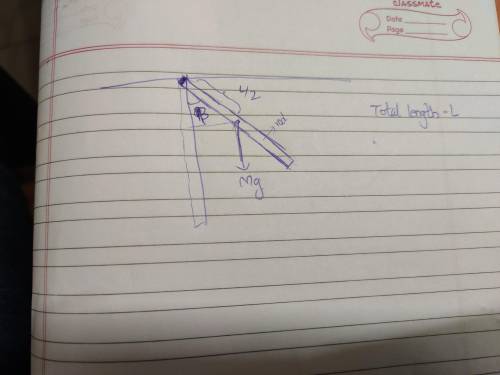
Physics, 20.12.2019 02:31 look26goingjbgy
Athin uniform rod (mass = 0.53 kg) swings about an axis that passes through one end of the rod and is perpendicular to the plane of the swing. the rod swings with a period of 1.4 s and an angular amplitude of 3.9°.
(a) what is the length of the rod?
(b) what is the maximum kinetic energy of the rod as it swings?

Answers: 3


Other questions on the subject: Physics

Physics, 22.06.2019 06:30, robertrkumar1
At very high pressures, gases become and will eventually a) more dense; become hotter b) more dense; change to a liquid or solid c) less dense; combust d) less dense; turn into a liquid
Answers: 2


Physics, 22.06.2019 18:30, kayleahrayne
Ablock of mass m slides on a horizontal frictionless table with an initial speed v0 . it then compresses a spring of force constant k and is brought to rest. the acceleration of gravity is 9.8 m/s2. how much is the spring compressed x from its natural length? 1) x = v0*sqrt(k/(mg)) 2) x=v0*sqrt(m/k) 3) x=v0*((mk)/g) 4) x=v0*sqrt(k/m) 5) x=v0*(m/kg) 6) x=v0*sqrt((mg)/k) 7) x=(v0)^2/(2g) 8) x=v0*(k/(mg)) 9) x=(v0)^2/(2m) 10) x=v0*((mg)/k)
Answers: 3

Physics, 23.06.2019 01:00, exoticbunnylover123
Learning goal: to understand newton's 1st law. newton's principia states this first law of motion: an object subject to no net force maintains its state of motion, either at rest or at constant speed in a right line. this law may be restated as follows: if the sum of all forces acting on an object is zero, then the acceleration of that object is zero. mathematically this is just a special case of the 2nd law of motion, f⃗ =ma⃗ , when f⃗ =0. when studying newtonian mechanics, it is best to remember the 1st law in two ways: if the net force (i. e., sum of all forces) acting on an object is zero, the object will keep moving with constant velocity (which may be zero). if an object is moving with constant velocity, that is, with zero acceleration, then the net force acting on that object must be zero. complete the following sentences to see if you can apply these ideas. part a if a car is moving to the left with constant velocity, one can conclude that
Answers: 1
You know the right answer?
Athin uniform rod (mass = 0.53 kg) swings about an axis that passes through one end of the rod and i...
Questions in other subjects:










Mathematics, 16.12.2019 19:31

 J
J


